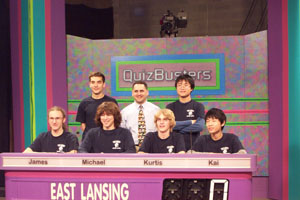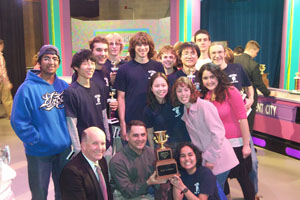This is definitely a Frequently Asked Question.
In the Goodsol Solitaire Forum, there is a question that keeps coming up; in fact, some people ask it in the very same forum thread in which I have already answered it comprehensively. Instead of repeating myself, I am posting it here for ease of linking and because some readers may find it interesting. (I have always enjoyed this kind of mental exercise, even if I have had less time for it recently.)
The question is:
What is the fewer number of moves to win a game of Spider Solitaire?
Here is the answer:
51
The explanation (from the forum):
The lowest move count would be fewer than 101 moves, and one could probably construct a deal which demonstrates this. The chances of actually winning a game of Spider in Pretty Good Solitaire in fewer moves is almost impossibly low, however.
The base calculation is actually fairly simple: Normally, each card lower than a king, of which there are 96, needs to be moved at least once, and there are five extra moves needed to get all of the cards from the stock. This gives a total of 101 moves.
However, each of the moves from the stock could produce a sequence in one or more columns, so the above number could be reduced by as many as 10 moves each, if the cards line up perfectly. That would give a theoretical lowest limit of 51 moves, and it could be a challenge to create a deal by hand that would work (although I believe that it is definitely possible).
Now, the practical proof (a forum followup):
Anyway, as an intellectual challenge, I actually constructed (stacked) a deck for Spider that produces a game that can be solved in only 51 moves. Not only that, but every move is obvious and no legal move is left unmade. (In other words, it plays perfectly naturally.)
Without further ado…
Starting at the top of the deck (comprised of 2 packs, 104 cards):
(tableau)
KS KH 9H 5H KD 9D 5D KC 9C 5C
KC JC 8C 4D 5C QS 2D 9S 6S 3C
KD QD TD 9D 8D 7D 6D 9S 8S 7S
JD QH 9H 6H 3H KS QS 6S 5S 4S
KH TH 7H 4H AH JS TS 3S 2S AS
JH 8H 5H 2H
(stock)
5D TC 7C 3D 4C JS AD 8S 5S 2C
QC 9C 6C 4H AC TS 4D 7S 4S 4C
3S QH 8H 3H QD 8D 3D QC 8C 3C
2S JH 7H 2H JC 7D 2D JC 7C 2C
AS TH 6H AH TD 6D AD TC 6C AC
If one starts with this deck, the game can and will be solved in only 51 moves.
Enjoy!

 The week before last, my son, James, played in the
The week before last, my son, James, played in the 
